There’s nothing more disappointing than waiting all season, catering to your pepper plants only to harvest two or three measly peppers. If you’ve had this experience, you can try these methods on how to increase pepper plant yields.
There are several factors that play into pepper plant productivity throughout the growing season, so we’re here to help! With these simple guidelines, your plants will be producing more peppers than ever before. Here are the steps for how to get more peppers per plant.
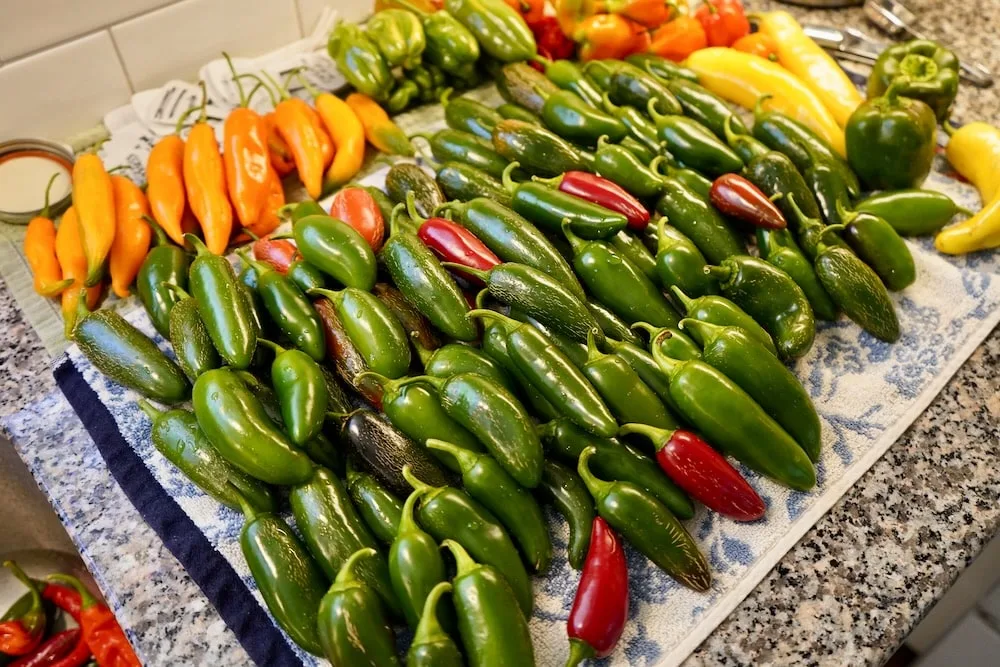
Steps to Increase Pepper Plant Yield:
- Start your pepper plants indoors
- Use grow lights!
- Use the right soil
- Use a big enough pot (for potted plants)
- Use the right fertilizer
- Prune your plants
- Optimize sunlight, heat and watering
When To Start Pepper Plants Indoors
Depending on where you live in the world, you may need to give your pepper plants an early start to get maximum yields. If you live in hardiness zones 3-7 where the last frost is in April or May, starting plants indoors gives your pepper plants the longer growing season that they need.
In short, plant pepper seeds indoors 6-8 weeks before the last chance of frost. This date varies by location, so use your hardiness zone to learn when your last frost typically occurs.
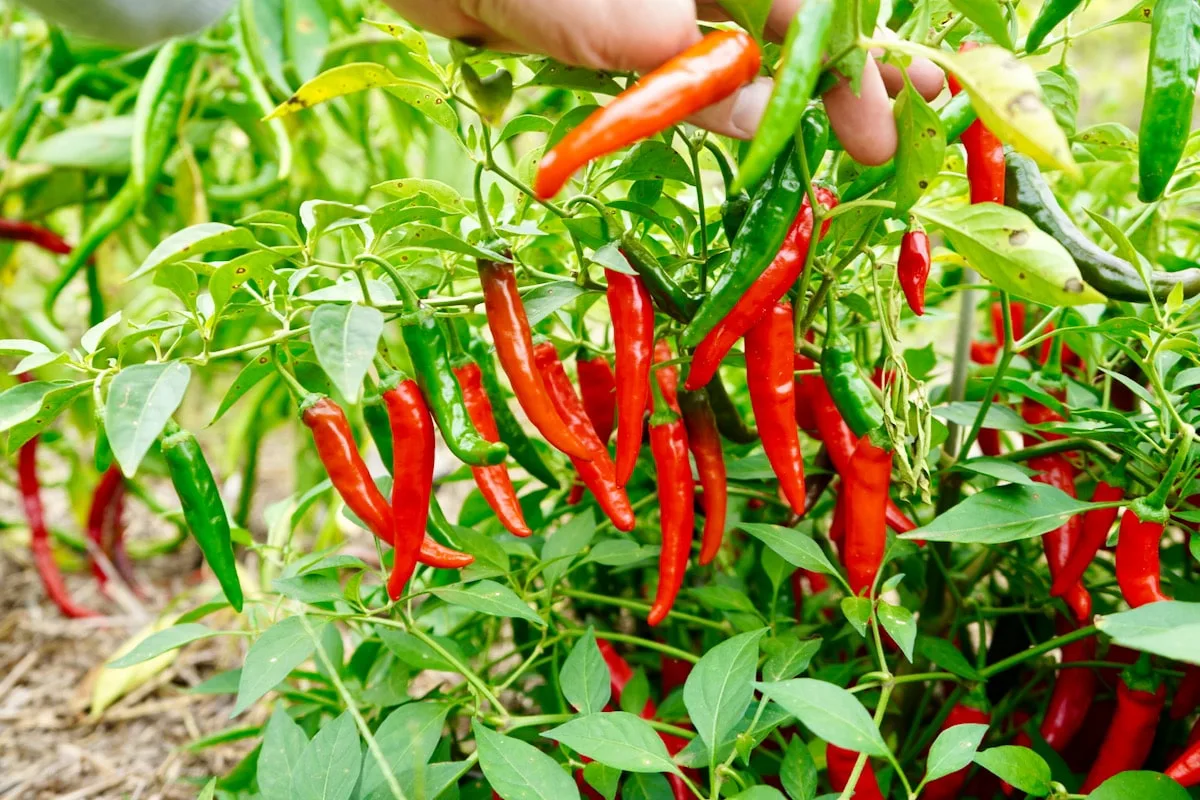
For example, here in zone 6a we plant our pepper seeds in mid-March. However, if you lived in zone 9b, you may plant your seeds in early January to be moved outdoors in March!
Thankfully, starting your seedlings indoors is very easy and relatively cheap, using either a bright sunny window, or ideally a full spectrum grow light. Read about the best grow lights for peppers here.
Planting seeds early extends your growing season and allows pepper plants to fully mature and produce outdoors. Once the risk of frost has passed, you can begin transitioning the plants to direct sunlight outdoors (check your last Spring frost date here: Almanac.com).
Tip: If you want to encourage bushier plants, you can start seedlings a few weeks earlier. Starting peppers really early will allow you to prune your plants to encourage fuller plant growth and potentially better pepper yields.
Use A Grow Light
There are endless options to choose from when buying an indoor grow light. We use noise-free LED lights that are highly efficient and don’t put off too much heat. We also use a clip-on adjustable LED light for adding supplemental light.
See our favorite grow lights for peppers here.
We use this high-output LED light on Amazon for seedlings and larger plants before moving them outdoors. This light is also great for fully indoor grows, from seedling to harvest.
We also use a clip-on LED light from Amazon for supplemental light when starting our seeds and when indoor plants are fruiting.
For a more affordable, great all-around option, check out this more budget-friendly LED unit.
Isn’t a sunny window enough?
Put simply, a sunny window is not ideal for growing peppers from seed. When your seeds sprout, they need strong, consistent light to get a good start. Window sunlight is filtered, and doesn’t last long enough each day, especially in winter. With a grow light, you can provide 16+ hours of light every day, avoiding leggy, weak pepper plants from the beginning.
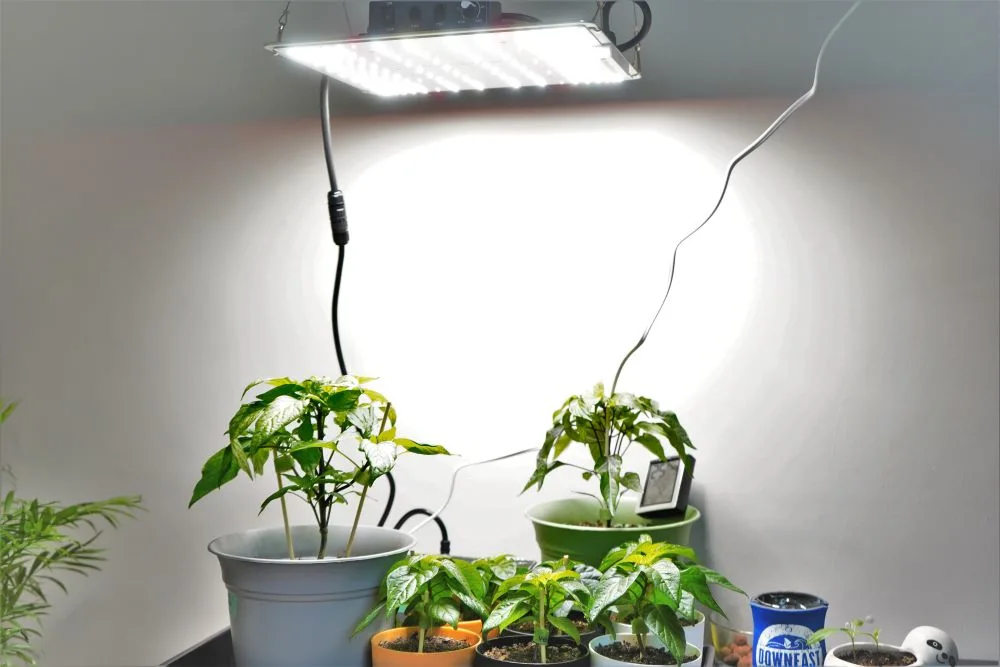
Read Next: Guide to growing hot peppers.
Avoid units that use fans if you can, as they can be noisy and are considered to be outdated at this point. We also prefer the sun-like full-spectrum lights because they don’t emit aggressive purple and blue tones.
Moving Plants Outside / Hardening Off Plants
Hardening off plants can be a tricky process. Indoors, the new plants are not adjusted to the natural elements like wind, rain, direct sunlight and fluctuating temperatures. In order to smoothly transition your plants outside, you must do it gradually.
Recommended schedule for transitioning plants outdoors:
- 1st week: 20 minutes of direct sunlight, or 1 hour of shade daily
- 2nd week: 1 hour of direct sunlight, or 3-4 hours of shade daily
- 3rd week: 2 hours of direct sunlight daily, or all day in the shade
- 4th week: Transplant outdoors permanently
Some climates are more forgiving, and others harsher. Keep an eye on your plants, especially during the first few days outdoors. If the plant’s leaves are looking wilted, take them inside right away and wait until tomorrow.
Also, be sure to avoid low nighttime temperatures. Peppers do not want to be outdoors in temps below 50°F. Never rush the process of hardening off peppers! It can lead to curling leaves and very stressed plants.
Using The Best Soil For Pepper Plants
A healthy pepper plant starts with a healthy growing environment. That means using the right soil. If you plan to start your plants indoors, you’ll want to have 2 distinct soils. One for starting seedlings, and one for post-transplanting.

Seed Starting Soil
When you start seeds, the soil should be well-aerated and low in nutrients. A pepper seed contains built-in nutrients that help the plant germinate and grow to a certain size. Then, the plants can be moved to more nutrient-rich soil.
Use a seed starting mix when sowing seeds to encourage good germination. We recommend Purple Cow seed starter mix on Amazon.
Note: It is important not to start your seeds indoors with soil taken from outside. This can bring in mold, insects and other unwanted problems. Definitely use a bagged seed starting soil to avoid these headaches!
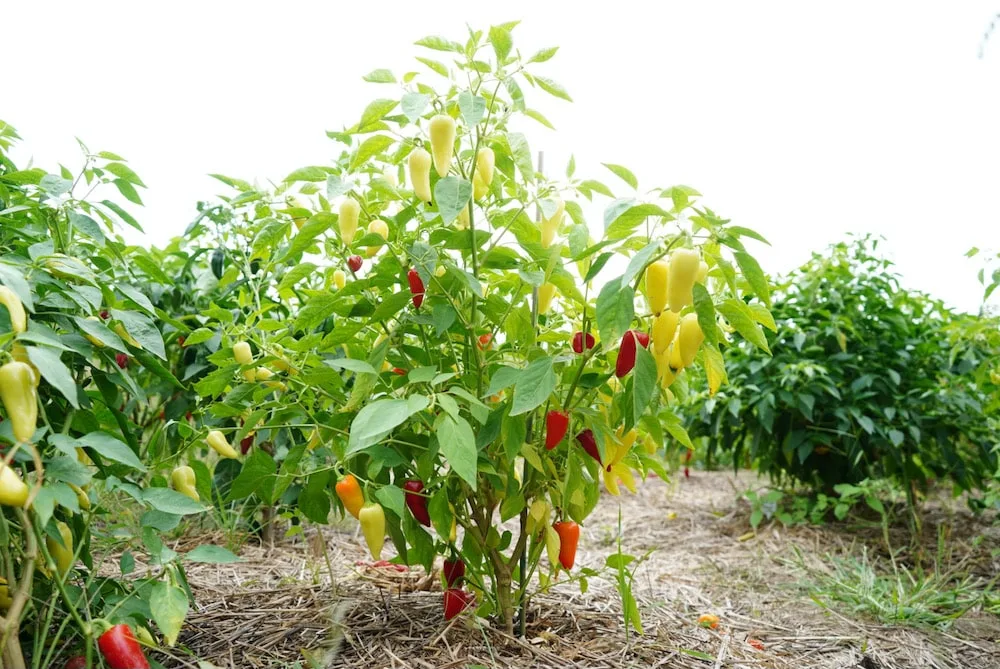
Potting Soil
When you transplant your pepper plants into larger pots, you should switch to a more nutrient-rich potting mix. You’ll want to have a light soil composition (on the loamy side), but most well-reviewed veggie potting soils will work fine for peppers.
If you are planting in the ground, we recommend amending the soil with plenty of organic matter, like compost, every season. This will ensure that your soil is healthy and full of the beneficial bacteria and other organisms that help peppers thrive.
You can also amend your potting soil for added nutrition. We use bone meal for calcium and epsom salt for magnesium and sulfur.
Tip: If you have a raised bed or garden plot, plant a cover crop in fall to keep the soil active and the root diversity high.
Preparing Soil
Always pre-moisten soil before lightly packing it into pots. If you are working with a garden bed, you can loosen (not till!) the soil with a garden fork around 2 weeks before the last frost. This improves aeration and drainage and allows time for the micro-organisms in the soil to recover before planting.
If you are planning to grow your peppers in a pot, choosing the right pot can make a big difference in the size and output of your plants.
What is the Best Pot for Pepper Plants?
If you are growing peppers in pots, you may be wondering what the best pot for pepper plants is. The answer is simple: 12-inch diameter pots or larger.
Without enough soil, a pepper plant’s growth can become stunted, and the plant may never reach its full potential size. Pepper plant yields will suffer without at least 3-5 gallons of soil.
We love the Bloem Saturn Planters on Amazon. They have a variety of fun colors and sizes to choose from!
You’ll have to choose the right size planter pot for your specific growing space. There are many options on Amazon for large planter pots. Ultimately, the larger the planter, the larger the root system can grow and the more peppers you can yield.
Tip: When first transplanting your pepper plants, be sure to pre-moisten and mix the potting soil that they will move into so that it will take on water more easily throughout the growing season.
After you have transplanted your plants outdoors, it is time to begin a fertilizing schedule.
Using the Best Fertilizer for Pepper Plants
Peppers need a healthy balance of nitrogen, phosphorus and potassium to grow well. When you buy fertilizer, you will often see three bold numbers on the packaging. These correspond to these three elements and their quantities in that particular fertilizer.
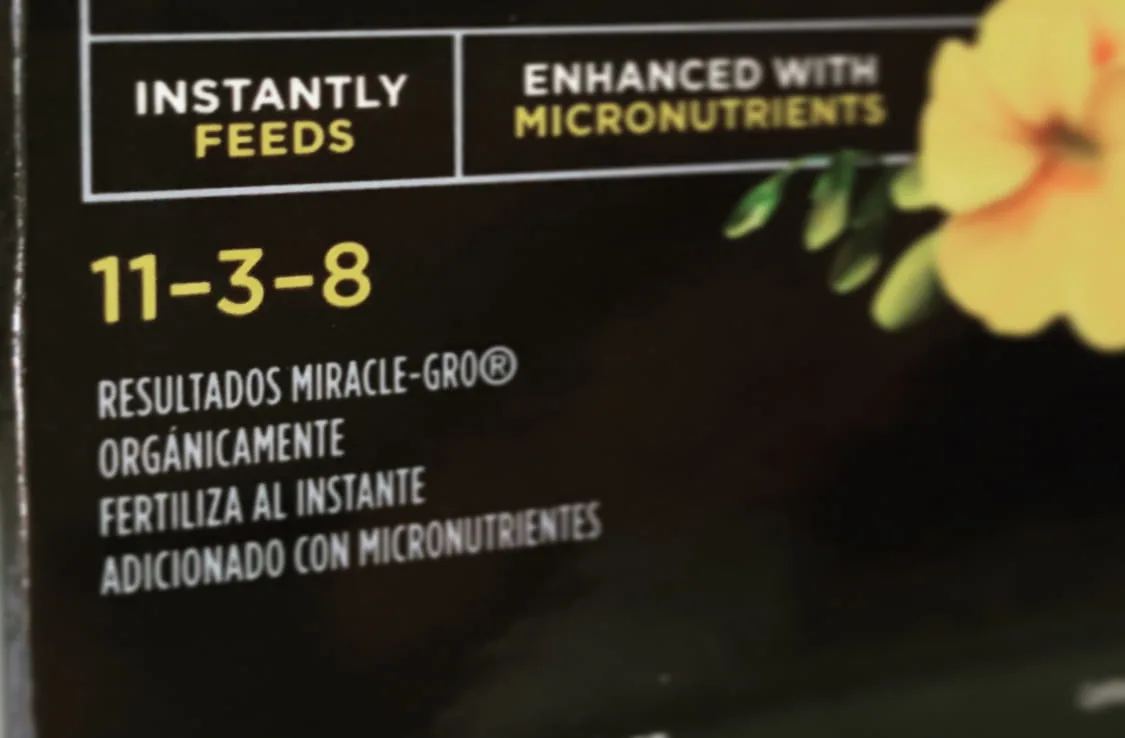
How Often to Fertilize Pepper Plants
We begin fertilizing immediately after the peppers germinate at a reduced strength. Don’t fertilize immediately after transplanting. Wait around a week to allow the root system to integrate with the new soil. Then you can re-start your fertilizing regimen.
As a general rule, you should fertilize once every 1-2 weeks when plants are growing. To keep it simple, we recommend using a higher nitrogen fertilizer while pepper plants are growing rapidly to maximize pepper yields.
Fox Farm makes a great trio of fertilizers that help keep fertilizing peppers simple. Use the ‘Grow Big’ during early growth, and switch to ‘Bloom’ or ‘Tiger Bloom’ when the plants are outdoors and begin to flower.
Higher nitrogen encourages strong leafy growth which is essential for a strong, healthy plant.
After plants are full-sized and begin to flower, you should transition to a lower nitrogen fertilizer, for example 3-5-5, or 5-10-10. However, this isn’t completely necessary. You could also simply reduce the strength of your fertilizer instead.
A lower amount of nitrogen helps increase fruit production instead of an abundance of leafy growth. Most fertilizer brands will label each type of fertilizer with ‘Grow’ or ‘Bloom’ to indicate what stage of growth the fertilizer is meant for.
Note: One of the signs of too much nitrogen is flowers falling off of your pepper plants. Be careful not to over-fertilize, especially with concentrated products.
Read more about how we fertilize our pepper plants in our article here.
Pruning Pepper Plants
Pruning is easy. It involves a sharp pair of scissors and your pepper plants. However, before you start snipping away, first make sure you want to prune in the first place.
The goal when pruning is to direct the energy of the plant to where you want it to grow. For example, if you want to keep your pepper plants a particular shape or size.
By pruning, we take away some stems and non-essential parts of the pepper plant so that growth is focused where we want it.
Should You Prune Pepper Plants?
But is pruning necessary? Here are the situations where pruning may be beneficial.
- Early plants. If you started your pepper plants extra-early in the winter, you may want to prune once before transitioning outside. This can keep the plants a manageable size while they are indoors, and can encourage a more bushy structure in the long-term.
- Tall plants. If your pepper plants are growing tall and lanky, a light pruning can help re-shape them. Lopping off the top of your tall peppers will redirect energy to producing more low-end shoots.
- Low branches. One of the best ways to avoid disease in your pepper plants is to keep leaves away from the soil surface. As the plants grow larger, prune away any branches that are within 6-8″ from the ground. This is called bottom pruning and is highly recommended for both peppers and tomatoes.
- Overwintering. If you have a pepper plant that you just can’t part with at the end of the season, you can prepare it for overwintering. This involves heavy pruning, leaving just a few leaves on the plant to allow photosynthesis to continue.
In general, we no longer “top” our pepper plants early in the season. We have found that the resulting yields are not different enough to justify the extra work involved. But of course, feel free to experiment for yourself!
Using The Right Tool To Prune Peppers
When pruning your plants, make sure you are using sharp scissors. Do not use your fingers to break the stems, as this can cause you to crush and bruise the stem. A knife can work as well, but make sure it is sharp enough to easily slice through without crushing the stems.
We love these affordable pruning shears on Amazon.

Pruning Young Pepper Plants
On young starter plants, about 3-5 inches tall, you can prune your pepper plants just past the second or third node (this is where new sets of leaves begin). You are stopping the upward growth of the plant by cutting off the top of the plant. This will encourage your young pepper plant to grow outward, and establish a sturdy base.
Note: Make sure you leave at least 3-4 sets of leaves on your plant. Without leaves, the plant will not be able to photosynthesize!
Pruning Mid-Sized Pepper Plants
While peppers are in their adolescent stage, you can prune away low branches to keep avoid disease. The low branches are susceptible to soil splashing during rain or irrigation, which can introduce disease.
You can also prune away any early flowers that have bloomed. This will allow the plant to fully develop a healthy canopy before it starts putting energy into producing peppers. Stop pruning flowers once the plants are established outdoors.
Read Next: Should you pinch off pepper flowers?
Note: Do not prune growing plants too late in the season. If you prune with only 40 or 50 days left in the season, you may reduce your harvest before the frost arrives.
Pruning Late Pepper Plants
As the season wears on and you begin harvesting, you shouldn’t need to prune your plant during the season. However, as the season draws to an end, and the final frost is approaching, you can do one final pruning to help the plant finish producing its final peppers.
When the first frost of winter is 2-3 weeks away, cut away any branches that do not have any fruits. Leave enough leaves to continue photosynthesis. This will encourage your final harvest to mature before the plants die to frost.
Tip: Read our dedicated article on pruning here for the best guide to pruning pepper plants!
It is worth noting that pruning is not required, but can help stimulate your plant where it matters most to you.
Sunlight and Heat Stress for Pepper Plants
Pepper plants will grow best under full sunlight. This means 10-12 hours of direct sunlight during the mid-summer months.
These are ideal conditions, but most gardeners can still manage to get plenty of peppers out of 6 hours or even less daily sunlight. However, the amount of sunlight will directly affect your pepper plant’s yield.
Try to find the best location in your outdoor area to get the most sunlight possible during the day, especially in the morning and mid-day. If you live near trees, moving a plant 10 feet can make a huge difference in how much sunlight it receives!
Avoiding Heat Stress in Plants
Pepper plants prefer an average daytime temperature between 70-80°F. Pepper plants will often fail to set fruit if daytime temperatures are below 65°F or above 90°F. If you expect a stretch of very hot or cool weather, try to protect your pepper plants.
Heat stress can be a gardener’s nightmare. It can cause wilting leaves, sun scald, and dropping flowers. However, there are some things you can do, for both indoor and outdoor grows, to help survive a heatwave (90°F or higher).
- Water (a lot)! Plants will consume much more water during a heatwave. Keep plants moist, but don’t over-soak.
- Provide temporary shade. Use a beach umbrella or other object to provide your pepper plants with some shade during the afternoon hours. Between 12:00-4:00 PM are usually the hottest hours of the day.
- Don’t fertilize or prune during a heatwave. These activities should be put off until a heatwave is over.
- Expose early plants to cold temperatures before moving them outdoors. This is called the “cold treatment” and can help prepare plants for more varied temperatures.
- Keep a thermometer near your plants. Temperatures can vary dramatically in different areas of a yard. If your plants happen to be in a heat zone, you might consider moving them if possible.
For the most part, peppers are well-equipped for handling hot temperatures, but any plant has its limits. Watch for the common signs of heat stress like pepper plants with flowers but no peppers, stunted growth, and wilted leaves.
Increase Pepper Yields (Video):
Read Next:
We hope these pepper gardening tips will help you get better yields from your pepper plants. Share your pictures with us, we love seeing the amazing peppers that people are growing all around the world!
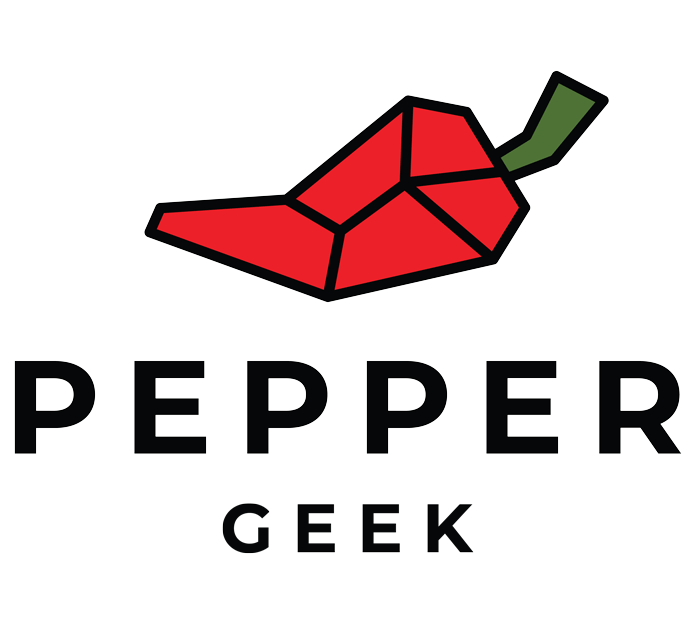
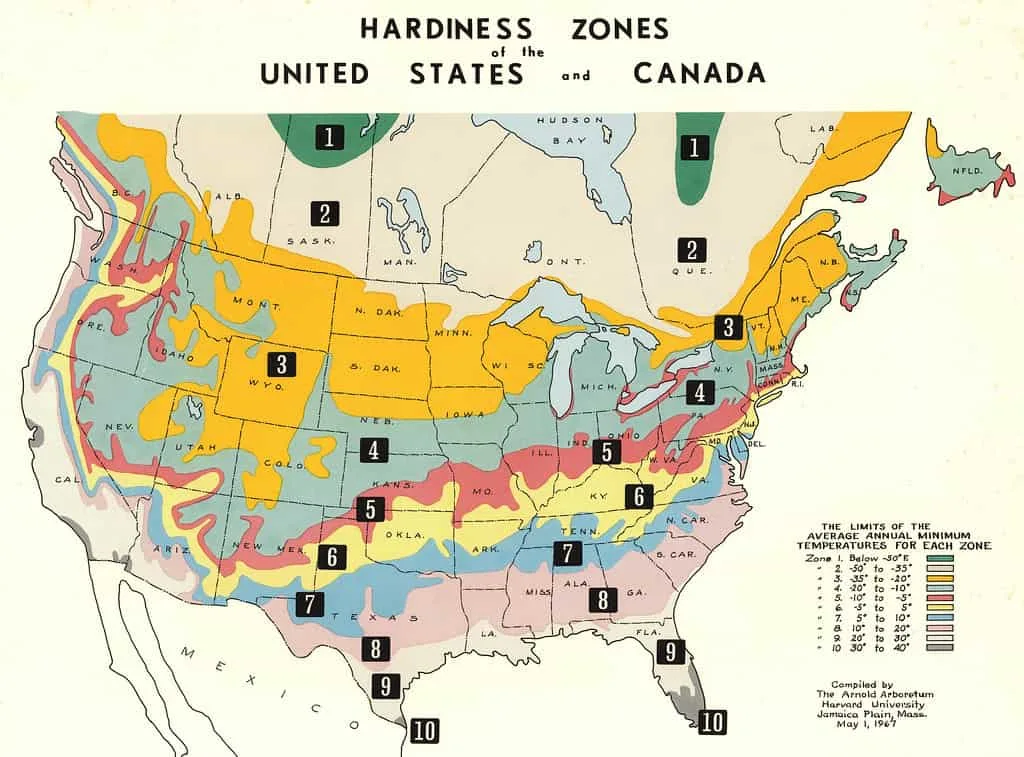
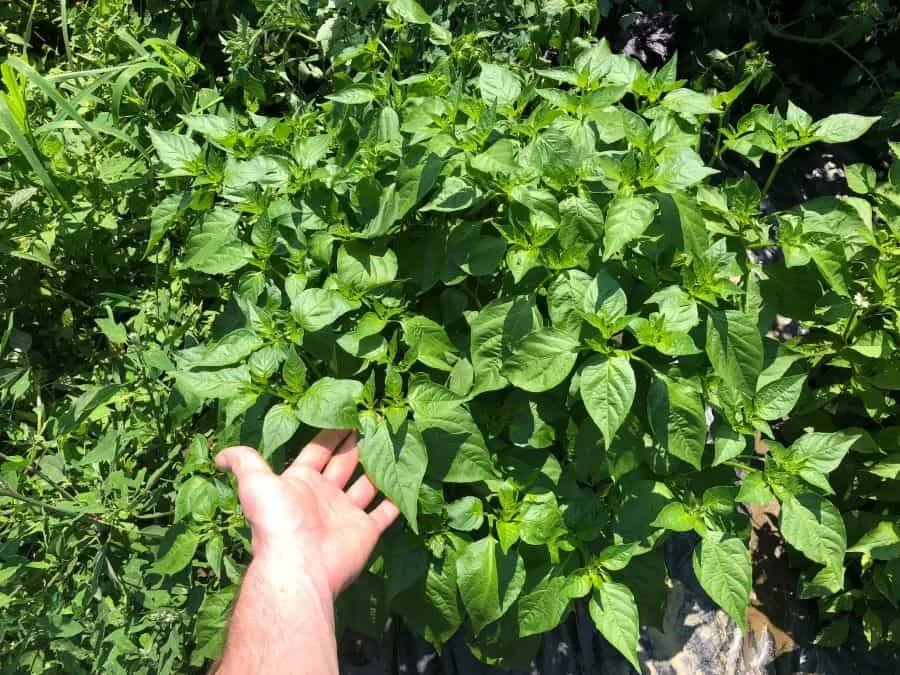

Anthony S
Saturday 23rd of September 2023
Excellent article, I found this and studied it over the 2022/23 winter in hopes of a better 2023 growing season. The summer of 2022 my Habanero didn’t do so well I only got about 40 peppers from it. I wanted to maximize my harvest so I followed much of this to the letter. I started from seedlings vs seed. I planted in 5 gal buckets with a quality organic raised bed soil and started with a nitrogen heavy fertilizer early to maximize plant growth plucking early flowers until the plants got some size to them, then let flowers set and switched fertilizer I used a liquid fertilizer 10-15-10 for the rest of the season. I’m ecstatic about the results. From 3 plants I’ve harvested 491 fully ripe habaneros so far and the plants still have green peppers I’m hoping will ripen before the season turns too cold. ( I’m in zone 4) My plants have actually started flowering again!
Thanks so much for such a quality article.
Kevin
Sunday 13th of August 2023
I fertilize my peppers with liquid fertilizer (Charlie carp) every two weeks my harvest has been prolific.
Dave Collins
Thursday 3rd of August 2023
Heathy plants wilt and die in three days what’s the cause
Liz
Saturday 3rd of June 2023
Help! My pepper plants have been decimated by my chickens TWICE already this spring. I live in Texas and it's June which means we've already got temps in the 80s! My husband left the garden gate open and my chickens basically stripped all the bell peppers and jalapenos down to the stems. Some of them have a single half-developed fruit and many of them still have tiny fruits that were beginning to form. Since they've already been "pruned", my instinct now is to remove all the fruits and flowers and fertilize to encourage new leaf growth and basically start over. Since this is the second time this has happened, none of the plants is over 1 foot tall.
OC
Sunday 11th of June 2023
@Liz, your instincts are good. Strip the flowers and hit it with a heavy dose of grow fertilizer to get leaf production going again. Still a good many months of excellent production to go, we've harvested peppers in October. Also, scream at your husband for me.
Rossa Mae
Saturday 3rd of June 2023
I have pepper plants in the pot,about 7 in.tall and theres a lot of tiny branches,should i let it grow?or prune it?
OC
Sunday 11th of June 2023
@Rossa Mae, Leave it and hit it hard with grow fertilizer. Bigger plants equal more fruit.
peppergeek
Sunday 4th of June 2023
Probably leave it!